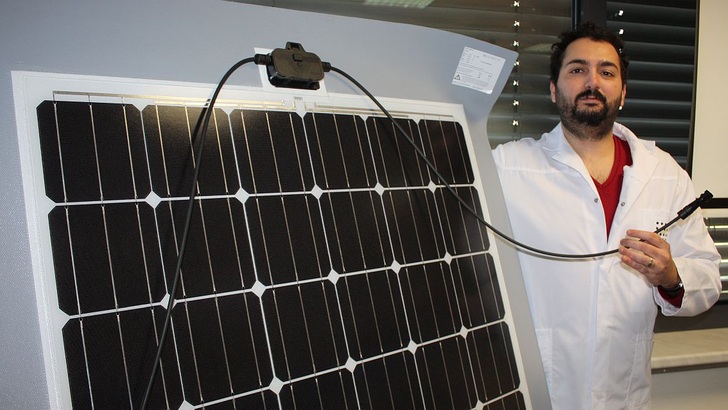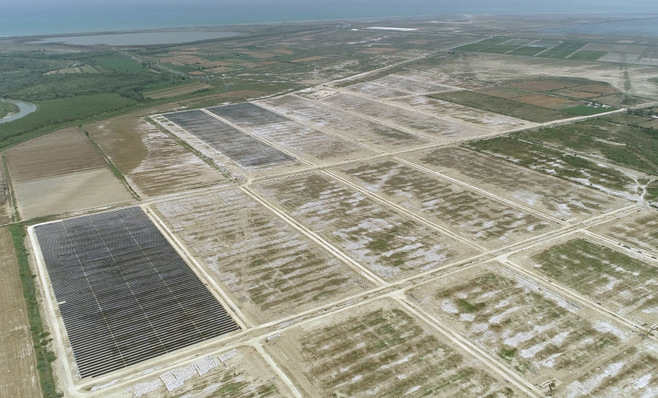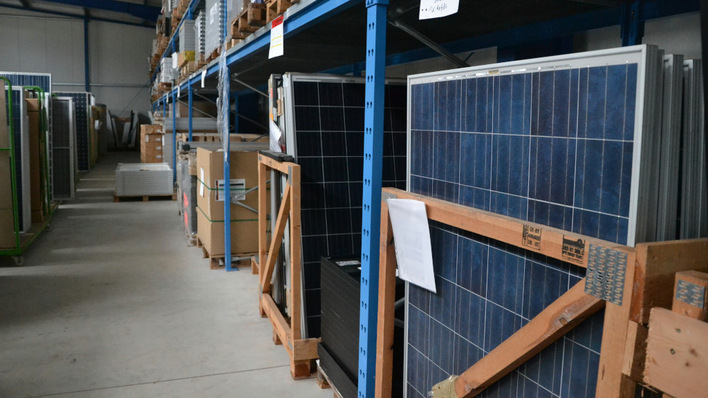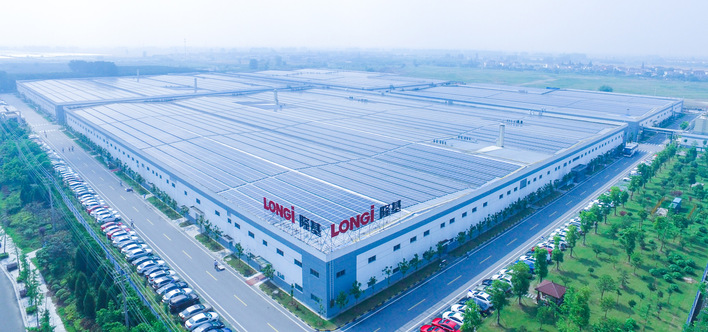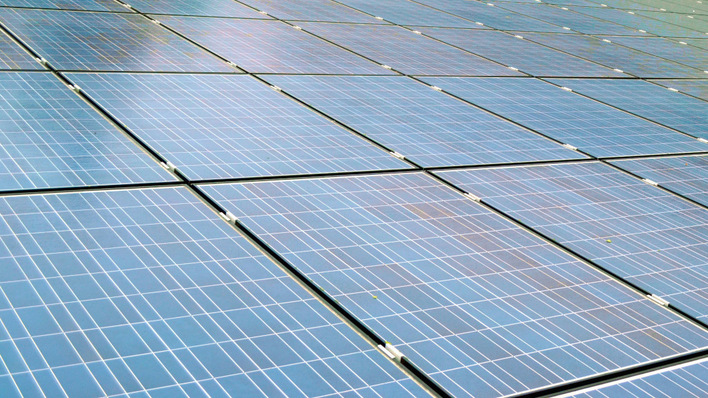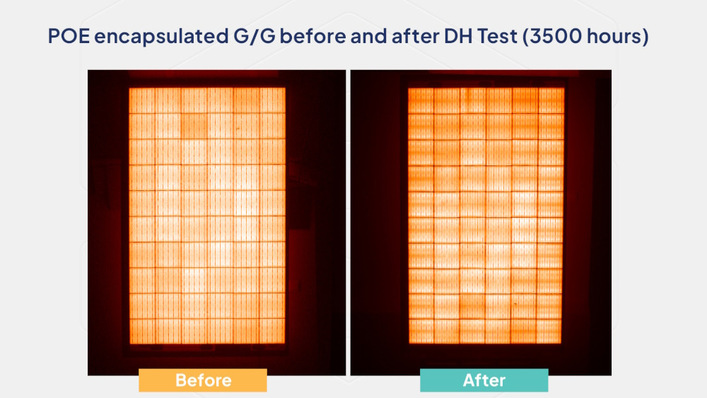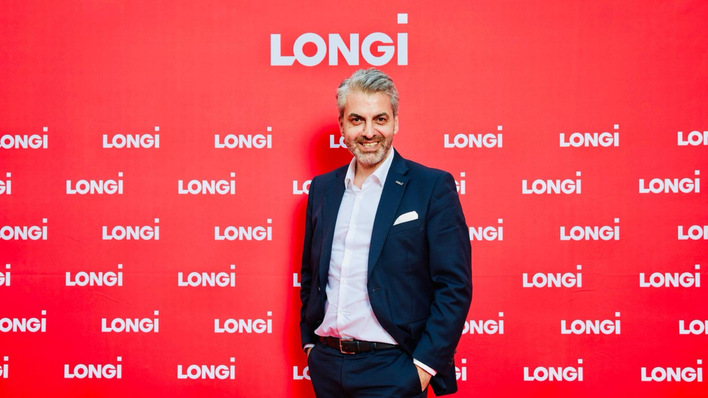Back to square one: The panel factory in Zwenkau near Leipzig has been quiet for a while. Formerly, Solarion produced a variety of CIGS panels, for instance on trapezoidal sheet metal or a flexible substrate. But then they went insolvent. A group of Turkish investors, the NGIM Holding from Istanbul, got involved. They produce building products and materials. In the future, their customers will also be able to get solar panels, through the company named OC3.
But nothing off the peg: Standardised panels are not where the money is, these days. OC3 will keep the Solarion brand going, but instead of CIGS panels, lightweight and crystalline panels will now be manufactured here. Some were specifically designed for membrane-covered roofs with low loads. In addition to the front glass, the monocrystalline solar cells and the backsheet of EVA, a membrane of TPO or PVC a few millimetres thick is laminated in.
Common membranes for roofing
Such membranes are first choice for roof sheeting, commonly used to cover flat roofs. The lightweight panels have a surface load of less than nine kilograms per square metre – as the complete installation. Because of the membrane on their back side, they can be easily permanently adhered to the roof surface by hot-air welding. And that is routine for any roofer. In Istanbul, a first large-scale installation (175 kilowatts) has been installed, and this will be extended already this year. According to Semra Mustafa, head of sales at Solarion, the company was granted their customs exemption a few weeks ago.
Another 400 kilowatt installation will soon be built in Germany, along with about 700 kilowatts that will be installed on the roofs of the factory in Zwenkau, Germany. “Last year, we developed the new panels,” Firat Aytas, in charge of strategic repositioning at OC3, reports. “They now have 48 cells, but we will soon present a 60-cell panel.”
48 monocrystalline cells
The panels currently generate between 205 and 225 watts. The solar array generates 115 watts per square metre, but the crucial advantage is the low weight. Membrane roofs tend to be on very sweeping industrial buildings which, as a result of their construction, have little load reserves.
Standard panels with a sub-construction are often too heavy, and they change the aerodynamic properties of the roof. A critical point is always the load transfer at the point where the metal mounting meets the roof sheeting, which just cannot support point loads. “Our panels only weigh nine kilograms per square metre,” Aytas explains. “It is not necessary to puncture the roof to create a solid connection to the outside of the building. Adhesives are the state of the art, and thus no problem.”
Connectors on the front
Data from the first pilot installation has shown that panels lying flat generate up to 15 percent more power than conventionally mounted ones. In order to achieve that, the thin Solarion M225 have to have their connectors on the front. “We decided to use sockets by Hirschmann Automotive in Austria,” Norbert Netzl, in charge of panel development in Zwenkau, says. “Because they are directly exposed to sunlight, the connectors need to be resistant to UV radiation. We subjected them to extensive testing beforehand.”
Another challenge was water collecting on the roof. It can happen in heavy rain that the connector sockets and panels are covered in a few centimetres of water. But the sockets have to remain waterproof. To that end, Hirschmann has developed a specialised waterproofing which seems to have stood the test of time. And the socket is not even sealed. The connection is made on the front using conventional HC4 plug connectors.
Weld to the roof surface – done!
Mounting these panels to a flat roof, on the other hand, is no problem at all. As the roofing membrane (TPO, PVC) makes a tight seal around the rear of the panel, it can even be adhered to the roofing sheet by hot-air welding. There is a four-centimetre overlap and the panels in sealed on all four edges.
TPO is more durable than PVC, which is why that membrane is thinner. That version of the panel only weighs 8.9 kilograms per square metre (9.5 kilograms for 1.8 millimetre PVC). The whole panel is manufactured in a two-opening laminator at 140 degrees Celsius. The front glass has a thickness of three millimetres.
Up to 60 megawatts per year
In the past year, OC3 has produced about a megawatt of the new Solarion brand panels. “By the Intersolar we will have concluded our investments into the factory,” Firat Aytas says. “Then we will be able to manufacture about 60 megawatts of light weight solar panels per year.”
Large EPCs that explore the industrial roofs for their solar power potential are both distribution partners and customers. OC3 are also getting in touch with roofing companies specialised in membrane-covered roofs. “Furthermore, we want to directly approach the buildings’ owners,” Aytas explains. “There is a huge market just in Germany. And also back in Turkey.”
OC3 gives a ten-year product warranty as well as a ten-year performance warranty on 90 percent of the nominal output and 25 years on 80 percent. (Heiko Schwarzburger)
Stay informed, get our newsletter twice a week. Register here: http://www.pveurope.eu/Newsletter
Related news:
http://www.pveurope.eu/Products/Solar-Generator/Solar-modules

